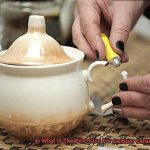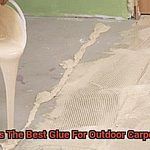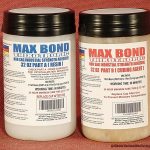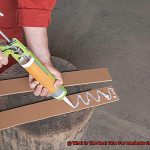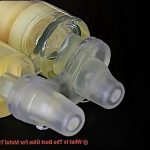Are you knee-deep in paper crafts, desperately seeking that magical adhesive to keep your masterpiece intact? Look no further. When it comes to bonding paper, the right glue can be the difference between a flimsy disaster and an enduring work of art.
In this blog post, we’re about to reveal the holy grail of paper bonding glues – the one that will keep your scrapbooks, origami, and handmade cards intact for years to come. So grab your scissors, dust off those glue sticks, and let’s dive into the world of adhesive wonders.
While there are countless options on the market, finding the best glue for paper bonding means considering versatility, drying time, and durability. We’ll explore traditional favorites like trusty PVA glue, take a peek into the innovative world of gluesticks and tacky glue, and even venture into unexpected territories with gel-based adhesives.
In our quest for the ultimate paper bonding glue, we’ll dissect each option’s pros and cons, provide expert advice, and highlight qualities that can elevate your crafting projects. Whether you’re a seasoned artist or just starting out, this blog post will equip you with knowledge to make informed choices and transform your paper projects into awe-inspiring masterpieces.
So stay tuned as we dive into the sticky world of adhesive marvels and unlock the secret to flawless paper bonding. It’s time to make your crafting dreams truly stick.
Types of Glue for Paper Bonding
Contents
When it comes to paper bonding, choosing the right glue can make all the difference. In this article, we will explore the different types of glues used for paper bonding, their advantages and disadvantages, and how to use them effectively.
White Glue: Classic, Versatile, and Safe
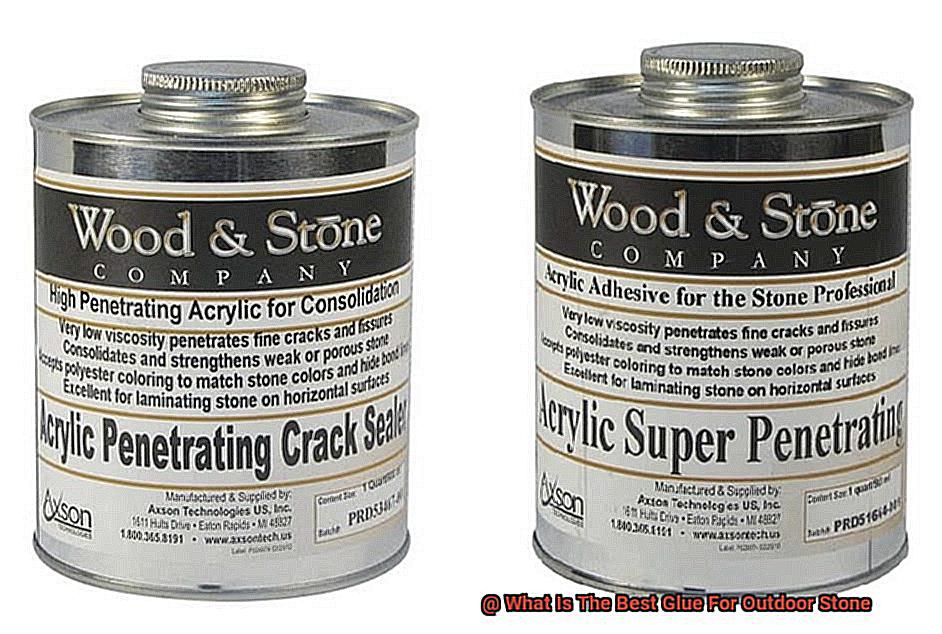
White glue, also known as school glue or craft glue, is a popular choice for paper bonding. It is easy to use, affordable, and readily available. This water-based adhesive dries clear and is non-toxic, making it safe for all ages. However, it may take longer to dry compared to other options.
Glue Sticks: Convenience and Clean Application
Glue sticks are solid adhesives that come in a twist-up tube. They provide a mess-free application and are perfect for lightweight papers. Glue sticks are commonly found in schools and offices. However, they may not be as strong as liquid glues and can leave a visible residue on the paper.
Liquid Glues: Spreading Thin, Drying Fast
Liquid glues, such as craft glues or adhesive glues, offer a thin consistency and faster drying time compared to white glue. They provide a stronger bond and are easily spreadable. However, caution must be exercised with the amount applied as excess glue can cause paper warping or wrinkling.
Specialty Glues: Tailored for Unique Projects
For specialized paper projects, there are other types of glues available. Rubber cement provides temporary bonding and easy removal without damaging the paper. Spray adhesives offer an even coat of glue when sprayed onto the surface and are ideal for large-scale projects or delicate materials.
Consider Your Project’s Needs
When selecting the right glue for your paper bonding project, consider factors like drying time, bond strength, transparency, and ease of application. It is important to follow safety instructions, especially for glues that may contain harmful chemicals, and work in a well-ventilated area.
Conclusion:
With a wide range of glues available, choosing the perfect adhesive for your paper bonding project can be an exciting adventure. Whether you opt for white glue, glue sticks, liquid glues, or specialty adhesives, understanding their characteristics and considering your project’s requirements will ensure a successful bond.
White Glue and School Glue
When it comes to paper bonding, two adhesive superheroes come to mind: white glue and school glue. While they may initially appear similar, there are key distinctions between these versatile glues. In this article, we will delve into the characteristics of white glue and school glue, empowering you to make an informed decision for your next project.
Similarities:
White glue and school glue share common traits that make them perfect for paper bonding. Both are non-toxic and safe, ensuring peace of mind during children’s crafts or classroom activities. Being water-based adhesives, they can be easily diluted or cleaned up with water, simplifying the cleanup process. Additionally, their thick consistency allows for mess-free application without any unsightly dripping or running. And let’s not forget the magic – they both dry clear, leaving no trace of adhesive on your masterpiece.
Differences:
While white glue and school glue have striking similarities, there are notable differences to consider. White glue, also known as PVA glue, is a versatile adhesive suitable for various applications beyond paper bonding. On the other hand, school glue is tailor-made for educational settings and may boast additional features like washability or increased safety measures.
Drying time is another key distinction. White glue typically dries within 30 minutes to an hour, forming a strong bond. School glue may require slightly more time due to its unique formulation but still ensures reliable adhesion. The drying time variance may affect your choice depending on your project’s urgency.
It’s crucial to note that while both glues work wonders on lightweight papers such as construction or printer paper, they may not adhere well to heavier or textured papers. In such cases, exploring stronger adhesives specifically designed for different paper types is recommended.
Glue Sticks
Glue sticks: the unsung heroes of paper bonding. These solid sticks of adhesive have become a staple in the world of crafts and school projects. But what exactly are glue sticks and why should you consider using them for your paper bonding needs? Let’s dive in.
Glue sticks are convenient to use, offering complete control over where the adhesive goes. No more dealing with messy liquid glue that drips and runs all over your project. Simply twist the bottom of the tube and glide the stick smoothly onto your paper. Easy peasy.
Not only are glue sticks convenient, but they also offer a dry application. This means you don’t have to wait for the glue to dry before moving on with your project. Say goodbye to those pesky interruptions and hello to seamless creativity.
Design-wise, glue sticks are nifty little things. They come in twist-up tubes, just like lipsticks. This makes them super portable and prevents the glue from drying out when not in use. No more wasting money on dried-up tubes of glue.
When it comes to choosing the right glue stick for paper bonding, there are a few things to consider. Look for one that is specifically formulated for paper bonding, ensuring it won’t damage or degrade your precious paper over time. A good glue stick should create a strong bond without causing wrinkles or warping on the surface.
Lastly, drying time matters too. Some glue sticks dry quickly, allowing you to keep working on your project immediately after applying the adhesive. Others may require a short waiting time before they fully set. It all depends on your needs and preferences.
Liquid Glues and Double-Sided Tapes
In the world of paper crafting, finding the perfect adhesive is crucial to achieving flawless results. When faced with the decision between liquid glues and double-sided tapes, it’s essential to understand their unique characteristics and benefits. Get ready to dive deep into the realm of adhesives as we explore the battle between liquid glues and double-sided tapes.
Liquid Glues – The Versatile Superstars:
Liquid glues reign supreme in the world of paper bonding, offering unrivaled versatility and ease of application. Let’s uncover their secrets:
- White Glue: Known as the ultimate workhorse, this adhesive powerhouse, also called PVA or school glue, delivers a strong bond that dries clear. It’s a go-to choice for projects where visibility matters, ensuring seamless results.
- Clear Glue: If invisibility is your mission, clear glue is your secret weapon. This transparent marvel disappears into your projects while maintaining a robust bond, making it ideal for delicate and transparent materials.
- Glue Sticks: A crafty classic, glue sticks provide convenience and precision with their solid adhesive format. Twist them up, apply directly to your paper, and enjoy controlled application without messy spills. However, they may not be suitable for heavy-duty bonding.
Double-Sided Tapes – Instant Bonding at Your Fingertips:
For the impatient crafters seeking instant gratification, double-sided tapes are here to save the day. Let’s peel back their layers:
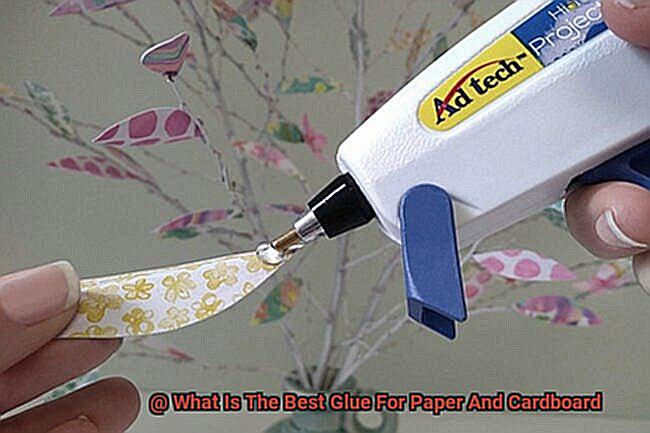
- Seamless Appearance: Double-sided tapes offer a clean and flawless finish, making them a go-to choice for scrapbooking and cardmaking projects. With no drying time required, you can keep crafting without any interruptions.
- Reliability in Simplicity: While not as robust as liquid glues, double-sided tapes provide a reliable bond for most paper applications. Selecting the appropriate tape thickness ensures optimal results, whether you’re bonding lightweight or heavyweight materials.
Choosing the Right Adhesive:
When faced with the decision between liquid glues and double-sided tapes, consider the following factors:
- Bond Strength: For projects requiring a robust and long-lasting bond, liquid glues are your ultimate ally. When it comes to less demanding applications, double-sided tapes offer a reliable solution.
- Drying Time: Time is of the essence in the crafting realm. Liquid glues require drying time, while double-sided tapes provide instant bonding. Consider your project’s timeline when making your adhesive selection.
- Paper Compatibility: Different papers have unique characteristics that may affect adhesive performance. Glossy or coated papers, for example, may require a specific adhesive type for optimal adherence. Test a small area before committing to a larger application to avoid any mishaps.
Specialized Adhesives for Specific Needs
In this blog post, we will take a closer look at specialized adhesives for paper bonding and explore the unique characteristics and benefits they offer in achieving flawless results. So, grab your glue gun and let’s dive into the fascinating world of adhesive wonders.
Archival Glues:
First up on our adhesive adventure is the mighty archival glue. This superhero adhesive is specifically designed to be acid-free and pH neutral, making it a safe choice for delicate papers that are prone to deterioration over time. Whether you’re working on bookbinding, scrapbooking, or any project that demands preserving the integrity of the paper, archival glue is your trusty sidekick. Say goodbye to yellowing and hello to long-lasting beauty.
Spray Adhesives:
Next, we have the dynamic duos known as spray adhesives. These aerosol-powered wonders provide a quick and even distribution of glue onto the paper surface. Ideal for large-scale projects or when you need to cover a large area with glue quickly, spray adhesives save you time and effort. However, beware – they can get messy, so make sure to use them in a well-ventilated area. Spray your way to efficiency.
Glue Pens:
For those seeking precision in their paper bonding endeavors, glue pens are here to save the day. With their fine-tip applicators, these pens allow for controlled and accurate application of glue. Whether you’re working on intricate designs or handling small pieces of paper, glue pens ensure that your project turns out just as you envisioned. It’s like drawing with glue – accurate, artistic, and adhesive.
All-Purpose Glues:
Last but not least, we have our jack-of-all-trades adhesive – white craft glue. This versatile option dries clear and provides a strong bond for most types of paper. From card making to collage and even paper mache, white craft glue is the go-to choice for a wide range of paper crafts. It’s reliable, easy to use, and readily available in most craft stores. Embrace the versatility.
Choosing the Right Adhesive:
When it comes to selecting the best adhesive for your paper bonding needs, consider factors such as the type of paper being used, the desired strength of the bond, and any specific project requirements. It’s always a good idea to test the adhesive on a small piece of paper before committing to the actual project. This ensures compatibility and helps you achieve the desired results with confidence. Choose wisely.
Tips for Choosing the Right Glue
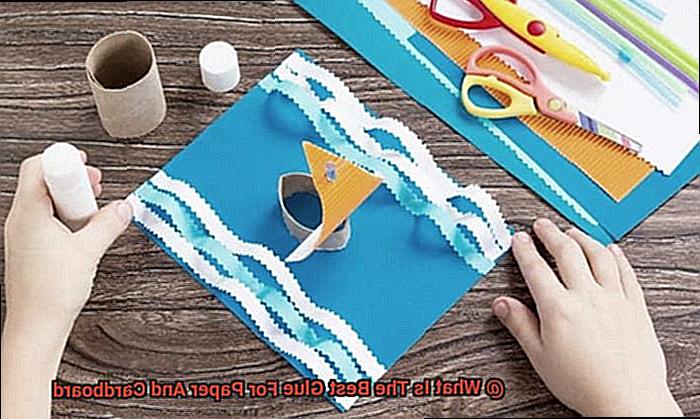
When it comes to paper bonding, selecting the right glue is vital for creating strong and durable bonds that will stand the test of time. With a multitude of options available, finding the perfect glue for your specific project can feel overwhelming. In this comprehensive guide, we will explore important considerations to help you make an informed decision and achieve flawless paper bonds every single time.
Consider the Type of Paper:
Different papers possess unique properties, and not all glues work well on every type. Delicate and lightweight papers require a glue that won’t saturate or warp them, while thicker or textured papers demand a stronger adhesive to create a secure bond. Before applying glue, always test a small area to ensure it doesn’t damage or alter the paper’s integrity.
Drying Time:
The drying time of the glue is a crucial factor to consider. If you’re working on a time-sensitive project or need to position and adjust your paper precisely, opt for a quick-drying glue. On the other hand, if you prefer more time for adjustments and perfecting your project before it sets, choose a slower-drying glue that allows for greater flexibility.
Bond Strength:
The strength of the bond is paramount, especially when working on projects that require long-lasting durability, such as constructing models or creating intricate paper sculptures. Look for glues labeled as “strong” or “durable,” as they are specifically designed to provide reliable and enduring bonds.
Ease of Application and Cleanup:
Choose glues with applicator pens or precision tips for effortless and controlled application. This allows you to apply small amounts of glue without making a mess or compromising the integrity of your project. Additionally, opt for water-soluble glues that are easy to clean up if you accidentally get some on your hands or workspace.
Read Reviews and Recommendations:
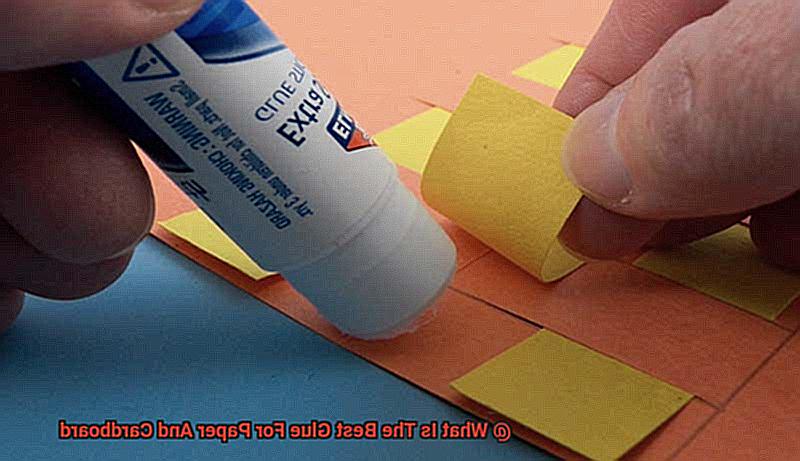
Take advantage of the wealth of knowledge and experiences shared by fellow crafters and artists. Reading reviews and recommendations online can provide valuable insights into the performance of different glues for paper bonding, helping you make an informed decision based on real-life experiences.
Testing the Adhesive Before Use
In the world of paper bonding projects, choosing the right adhesive is crucial for achieving flawless results. With a plethora of options available, it can be challenging to determine which glue will work best for your specific project. That’s where testing the adhesive before use becomes essential. In this comprehensive guide, we will explore the importance of this step and provide practical tips to ensure your paper bonds are not only strong and durable but also visually stunning.
Compatibility with Paper Type:
Different adhesives have varying levels of compatibility with different types of paper. To prevent potential damage or discoloration to your precious paper, conducting a simple compatibility test is key. Apply a small amount of glue to a test piece of paper, firmly press another piece onto it, and then carefully peel them apart. A strong bond that doesn’t cause any tearing or damage indicates a winning adhesive choice.
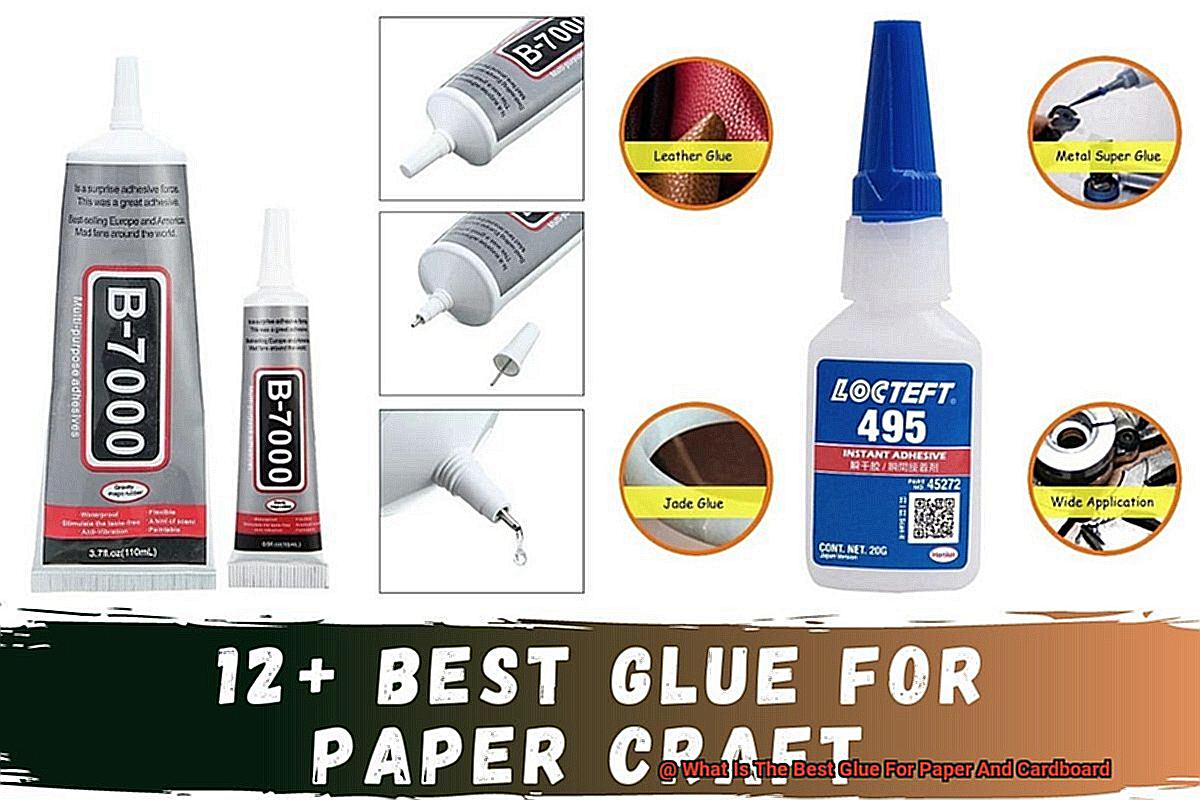
Strength Matters:
Whether you’re constructing a sturdy paper structure or repairing a torn document, bond strength is paramount. Test the adhesive’s strength by applying it to two pieces of paper, pressing them together, and allowing them to dry completely. If the bond holds strong and doesn’t easily come apart, you can trust its strength for your project.
Drying Time Considerations:
The drying time of an adhesive can make or break your project. Evaluate whether the adhesive’s drying time aligns with your needs. Apply a small amount of glue to a test piece of paper and observe if it dries within the specified timeframe. This will help you determine if it allows enough time for adjustments or if it sets quickly for immediate handling.
Specific Project Requirements:
Every project is unique, and so are its requirements. Take into account any specific needs or limitations when selecting an adhesive. For projects exposed to water or moisture, opt for waterproof or water-resistant glues. Delicate or valuable paper demands acid-free adhesives to prevent damage. By addressing these specific requirements during testing, you can ensure a successful outcome.
WjfqPb7r464″ >
Conclusion
When it comes to paper bonding, finding the best glue is crucial.
The right adhesive can make all the difference in ensuring a strong and long-lasting bond between paper surfaces. But with so many options available, how do you know which glue to choose?
In this blog post, we will explore the top contenders for the title of “best glue for paper bonding” and help you make an informed decision.


